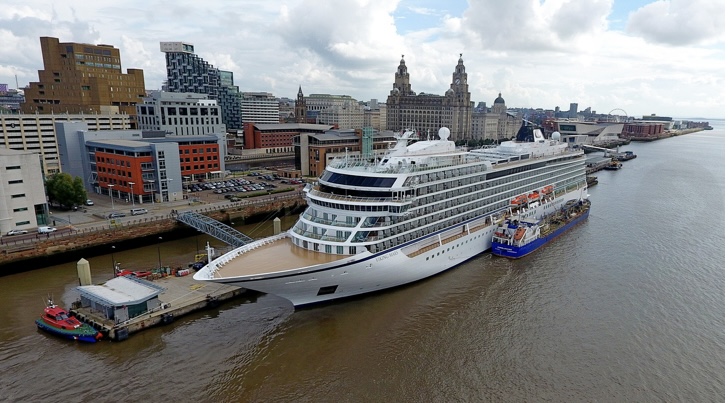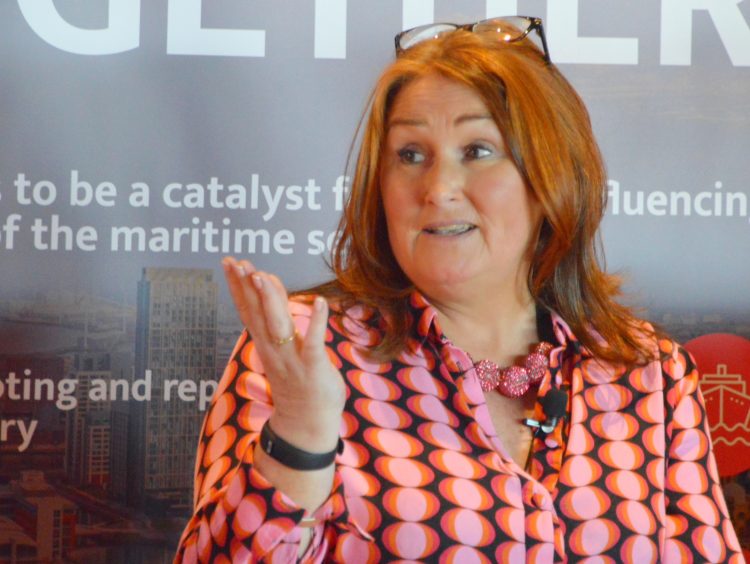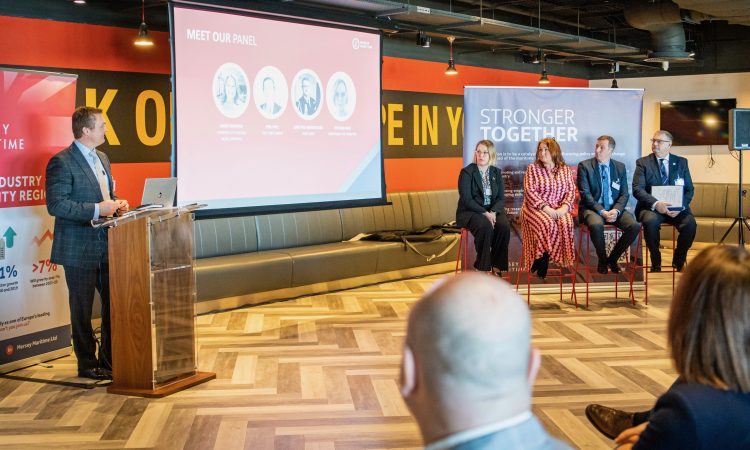‘Maritime family helped make cruise terminal a success’
Angie Redhead was a driving force in the building and the success of Liverpool Cruise Terminal and says credit for its growth must also go to the Mersey’s £5bn ‘maritime family’. Tony McDonough reports

Being part of one of the successful maritime clusters in Europe has been a crucial factor in the success of Liverpool Cruise line terminal.
That’s the view of Angie Redhead, city assets manager at Liverpool City Council who oversaw the development and opening of the terminal in 2007. Angie now has a wider cultural role for the city but the facility remains part of her portfolio.
She was speaking at the monthly Mersey Maritime Face-2-Face networking event. Usually held at its Birkenhead headquarters, this month Mersey Maritime took the event on the road to Liverpool FC’s famous Anfield Stadium.
Focused on the power of maritime clusters, the event featured speeches and a panel discussion. Taking part was:
- Sir Michael Bibby, chairman of Bibby Line Group and co-founder of Mersey Maritime.
- Phil Hall, Port Director (Mersey Ports) at Peel Ports Group.
- Commodore Phil Waterhouse of the Royal Navy.
- Angie Redhead, head of city assets at Liverpool City Council (Cruise Liverpool).
- Victoria Race, Victoria Race, deputy director of maritime policy and programmes at the Department for Transport.
- Catherine Sandow, head of fundraising at The Hive Youth Zone.
Chris Shirling-Rooke, chief executive of Mersey Maritime, opened the event by outlining the scale of the global maritime sector. Across the world, he said, the industry is worth £3 trillion, in the UK £116b and in Liverpool city region £5bn.
“Maritime is a huge huge ecosystem,” he explained. “Our industry is recession-proof – 95% of our food and fuel arrives here by sea. Since 2010 we have seen 88% employment growth and it is the people in this room that make it happen.”
He said that far from just being about shipping, maritime was a vast sector covering more than 30 sub-sectors, including professional services, logistics, engineering, digital and AI, and academia. And he said the sector must do its bit for net zero.
“We have to decarbonise,” added Chris. “We are responsible for 2.5% of all human carbon emissions. Our industry is already incredibly efficient but we must do more. There is support available from Government and we can help our members access that.
“Our coastal communities are the most deprived areas of the UK and it is vital that we use the power of clusters to create jobs and wealth.”
Liverpool Cruise Terminal, run by Cruise Liverpool, now welcomes more than 100 vessels to the facility on the waterfront every year. It has recovered strongly from the dark days of the pandemic.
Speaking during the panel discussion, Angie Redhead said: “We are quite unique in the UK as we are the only cruise terminal that is run by a city council. It would have been very easy for us just to do our own thing on the river.
“But we have worked with the rest of the maritime sector. We started off welcoming just three ships to where we are today. And we couldn’t have got there without our maritime family around us.
“We see ourselves as a shop window for the maritime sector. We only account for a small percentage of the vessels on the Mersey but when the public sees a big cruise ship on the river that is a visual representation of how the industry is thriving.
“Cruise Liverpool is a big part of the wider city and its economy and we also see ourselves as part of the maritime eco-system.”
READ MORE: Private sector partners ‘can create world class cruise terminal’
In her role at the Department for Transport, Victoria Race is one of the main figures responsible for delivering the Government’s Maritime 2050 strategy. This sets out a blueprint for the growth of the maritime sector over the next three decades.
She said: “Clusters are a key part of the Maritime 2050 strategy… it is important our team gets out of Westminster and speaks to people in the regions. Question is how do we harness the unique selling points of the UK sector to give the best advantage to UK plc.”
Victoria added that with Maritime 2050 now coming up to five years old it is vital it is reviewed and refreshed to ensure it remains relevant. And she said it needs to make sure that inclusion remained at the heart of the strategy.
She said: “We need to make sure it is still fit for purpose – the world has changed so much since 2019. And it needs to be a genuine collaboration between industry and Government.
“Decarbonisation offers both challenges and opportunities and the focus on skills and jobs growth has to be about attracting the widest possible range of people to come and work in the sector.”


With the recent expansion of the Port of Liverpool Peel Ports has a major role to play in the growth of the maritime sector and the economic wellbeing of the coastal communities it serves. Phil Hall spoke of the company’s commitment to decarbonisation.
“Net zero is massive,” he said. “Peel Ports is committed to being net zero by 2040. We have already looked at the quick wins such as in transport. There are challenges but if we can get it right as a cluster there are huge opportunities.
“We can create job and wealth across our coastal communities.”
Commodore Phil Waterhouse said the cluster created by Mersey Maritime and its members in Liverpool city region was “the most well developed” in the UK.
He added that although the Royal Navy was not a commercial entity in itself, it had taken a major role at a “policy and strategic level” and was heavily involved in the Northern Powerhouse, the national shipbuilding strategy and Freeports.
He spoke about AUKUS, a trilateral endeavour between the UK, Australia and the US. The Royal Navy and the Australian Navy will work together on a project to acquire conventionally-armed, nuclear-powered submarines.
This project will focus on Barrow where it will lead to the creation of thousands of jobs.
Commodore Waterhouse spoke of the challenges of decarbonisation for a service that operates high-speed ships, jets and helicopters. He added: “They are not necessarily conducive to cutting emissions.
“We have to work with industry and academia to identify solutions to this. We have to make sure we get smarter.”
READ MORE: Liverpool Navy base installs 100,000 Kwh turbine
Following the panel discussion Catherine Sandow addressed the audience about the work carried out by the Hive Youth Zone in Birkenhead. Mersey Maritime has pledged to help raise £20,000 for the organisation during 2023.
Sir Michael Bibby then rose to offer a closing speech to the event. He said: “When I came back to the Bibby Liverpool office in 1992 the people who worked there didn’t know anyone else in the local maritime community at all.
“We were just an isolated team doing our own thing. There was nothing in this city to bring us together. We needed to get to know each other if we were going to promote the sector and raise our profile with Government.”
Using a small amount of Objective One European money, Sir Michael says the sector was able to start organising. He added: “It is amazing to come back now and see how far we have come. And that is exactly how it should be.”
